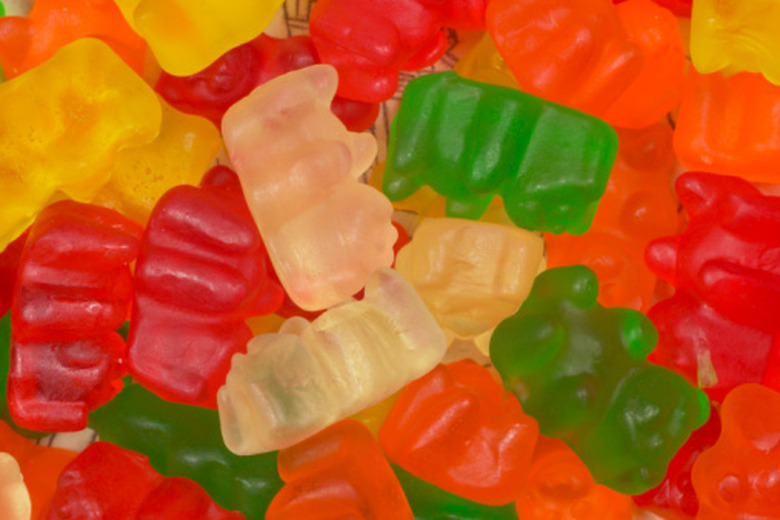How To Find The Mass, Density & Volume Of Gummy Bears
When teaching scientific measurements like mass, density and volume to kids in a classroom setting, gummy bears make good subjects because they are small and the kids can snack on them when they're done. Several classrooms have used this exercise to teach kids about measurements and as the first part in an experiment on how much the gummy bear changes in these measurements when soaked overnight in water. You can perform a few simple calculations to determine the mass, density and volume of a gummy bear.
Step 1
Measure the length of the gummy bear — from its feet to its head — with the ruler to the nearest millimeter.
Step 2
Measure the width of the bear — from one arm to the other — at its widest point to the nearest millimeter.
Step 3
Measure its thickness with the ruler from front to back to the nearest millimeter.
Step 4
Multiply the three measurements together to determine its volume.
Step 5
Place the gummy bear on a scale to find its mass to the nearest tenth of a gram.
Step 6
Divide the mass by the volume to determine its density.
Things Needed
- Ruler
- Scale
References
Cite This Article
MLA
Taylor, Dan. "How To Find The Mass, Density & Volume Of Gummy Bears" sciencing.com, https://www.sciencing.com/mass-density-volume-gummy-bears-8408456/. 24 April 2017.
APA
Taylor, Dan. (2017, April 24). How To Find The Mass, Density & Volume Of Gummy Bears. sciencing.com. Retrieved from https://www.sciencing.com/mass-density-volume-gummy-bears-8408456/
Chicago
Taylor, Dan. How To Find The Mass, Density & Volume Of Gummy Bears last modified March 24, 2022. https://www.sciencing.com/mass-density-volume-gummy-bears-8408456/
